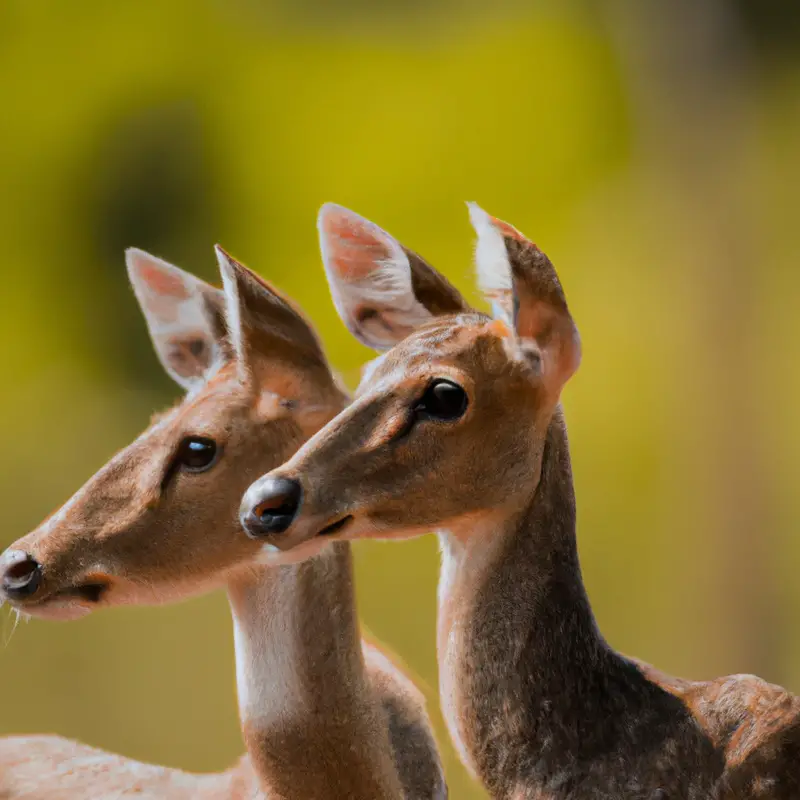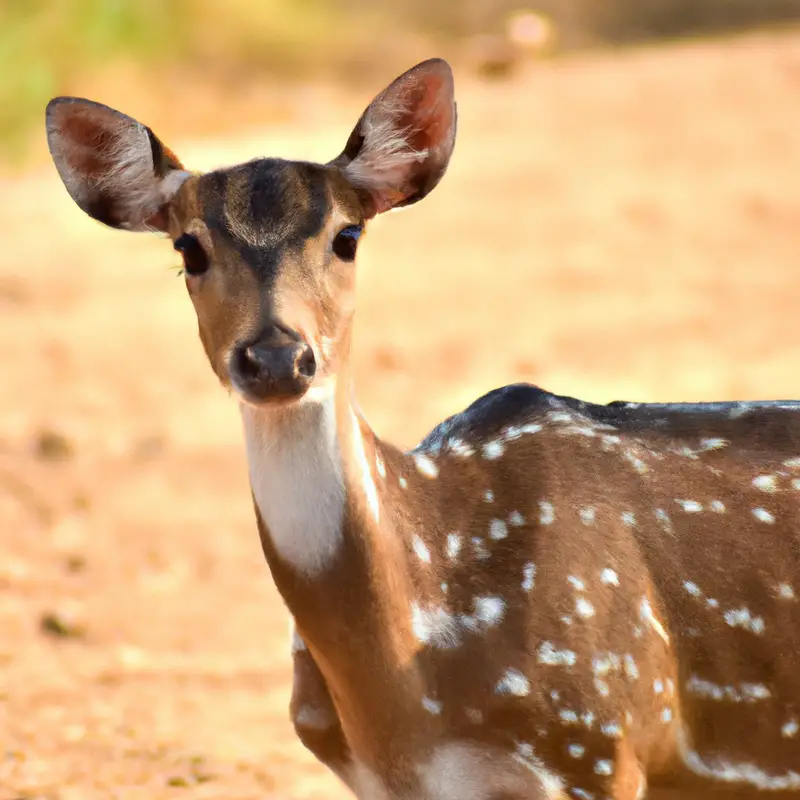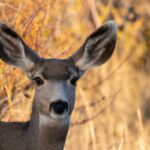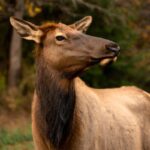Key Takeaways:
- White-tailed deer hunting in Colorado requires a valid license and adherence to specific regulations.
- Colorado offers diverse hunting opportunities for white-tailed deer in different game management units.
- Hunters can expect challenging terrain and varying weather conditions during their white-tailed deer hunting experience in Colorado.
- Successful hunting of white-tailed deer in Colorado requires knowledge of the animal’s behavior and habitat, as well as effective hunting tactics.
Imagine standing amid a picturesque Colorado landscape, the crisp autumn air filling your lungs as you wait patiently for the perfect shot. White-tailed deer hunting in Colorado is an exhilarating experience that promises adventure, challenge, and the potential for a trophy-worthy harvest.
As an avid hunter myself, I can’t help but be captivated by these majestic creatures and the thrill of the chase.
In this article, I’ll guide you through the ins and outs of white-tailed deer hunting in Colorado, from understanding the population to essential gear, planning a successful hunt, tracking and harvesting techniques, and the importance of ethical hunting practices. So, grab your gear and let’s embark on an unforgettable hunting experience in the beautiful state of Colorado!
Topic | Information |
Location | Colorado |
Season | Varies based on hunting method: Archery: September to January Rifle: October to November |
Licensing | To hunt white-tailed deer in Colorado, you need a valid hunting license and an appropriate deer license. |
Bag Limit | Depends on the hunting unit and the type of deer license you possess. Check the Colorado Parks and Wildlife website for specific information. |
Hunting Method | Possible methods include: 1. Archery 2. Rifle 3. Muzzleloader 4. Crossbow 5. Handgun 6. Shotgun (only during certain seasons and locations) |
Techniques | Common techniques for hunting white-tailed deer include: 1. Scouting and locating deer trails, feeding areas, and bedding sites 2. Using tree stands or ground blinds for stealthy approach 3. Employing calls and scents to attract deer 4. Utilizing camouflage clothing and scent control 5. Practicing patience and staying quiet to increase chances of success |
Regulations | It is essential to familiarize yourself with the Colorado Big Game brochure to understand the hunting regulations, restrictions, and legal requirements. |
Overview of White-tailed Deer Hunting in Colorado
White-tailed Deer Population in Colorado
The white-tailed deer population in Colorado is abundant, providing great opportunities for hunters.
The state’s diverse landscapes, including mountains, forests, and plains, create ideal habitats for these deer.
Colorado’s management strategies and regulations aim to maintain a healthy population and sustainable hunting opportunities.
However, it’s important for hunters to stay informed about specific hunting seasons, location restrictions, and bag limits.
Respecting the rules helps ensure the long-term viability of the white-tailed deer population in Colorado, while also allowing for a rewarding hunting experience.

Hunting Seasons and Regulations in Colorado
Hunting seasons and regulations in Colorado are important to know before heading out.
Colorado has specific dates for hunting different game species, including white-tailed deer.
These dates are determined to manage wildlife populations and provide fair opportunities for hunters.
It is crucial to familiarize yourself with the hunting season dates and regulations to ensure compliance.
Additionally, make sure to obtain the necessary licenses and permits required for hunting in Colorado.
Be aware of any additional restrictions or specific regulations for the area you plan to hunt in.
Essential Gear for White-tailed Deer Hunting
Firearms for White-tailed Deer Hunting
Choosing the right firearm is critical for white-tailed deer hunting.
For beginners, a bolt-action rifle chambered in .30-06 or .270 Winchester is a popular choice due to their accuracy and range.
More experienced hunters may prefer semi-automatic rifles like the .308 Winchester or the .243 Winchester.
Another option is a shotgun loaded with slugs, which can be effective at closer ranges.
Whichever firearm you choose, make sure to know your local hunting regulations and practice proper gun safety.
Happy hunting!
Clothing and Footwear for White-tailed Deer Hunting
When it comes to clothing and footwear for white-tailed deer hunting, comfort and stealth are key.
You’ll want to choose clothing that provides camouflage to blend in with your surroundings, such as a camo jacket and pants.
Opt for layers that can be easily added or removed depending on the weather conditions.
Good quality, waterproof boots with good traction are essential for navigating through different terrains and keeping your feet dry.
Choose socks that provide warmth and moisture-wicking properties.
Don’t forget to wear a hat or beanie to keep your head warm and camouflage your silhouette.
Optics and Accessories for White-tailed Deer Hunting
When hunting white-tailed deer, having the right optics and accessories can greatly enhance your experience and increase your chances of success. Here are some essential items you should consider:
- Binoculars: A good pair of binoculars allows you to scan the area and pick up movement from a distance. Look for ones with a magnification of at least 8x or 10x for better clarity.
- Rifle Scope: A high-quality rifle scope helps improve accuracy and ensures a clean shot. Opt for a scope with appropriate magnification and a reticle designed for hunting.
- Rangefinder: Knowing the exact distance to your target is crucial for making accurate shots. A rangefinder helps you measure distances quickly and effectively.
- Game Calls: Deer calls, such as grunt tubes or doe bleat calls, can be used to attract deer and increase your chances of getting close to them.
- Field Dressing Kit: After a successful hunt, a field dressing kit consisting of a sharp knife, rubber gloves, and game bags is essential for proper field dressing and processing of the deer.
Having these optics and accessories in your hunting gear can make a significant difference in your overall hunting experience and increase your chances of a successful hunt.

Planning a Successful White-tailed Deer Hunt in Colorado
Scouting and Locating White-tailed Deer
Scouting and locating white-tailed deer is key to a successful hunt.
Begin by studying maps and aerial photos to identify potential deer habitats.
Look for areas with dense vegetation, water sources, and nearby food.
Next, spend time in the field to observe deer behavior and travel patterns.
Look for tracks, droppings, and other signs of deer activity.
Use trail cameras to monitor deer movement and identify potential hunting spots.
Lastly, consider hiring a local guide or joining hunting forums to gather valuable information and insights from experienced hunters.

Setting Up Deer Stands and Blinds
When setting up deer stands and blinds, it’s important to consider your hunting area and the behavior of white-tailed deer.
Find a location that provides good visibility and clear shooting lanes.
Avoid disturbing the deer’s paths and bedding areas.
Choose a stand or blind that is comfortable and provides sufficient cover.
Make sure it is securely anchored and positioned at the right height for your specific hunting needs.
Camouflage the stand or blind to blend in with the surrounding environment.
Lastly, be mindful of wind direction to prevent detection by deer.
Using Deer Calls and Attractants
Using deer calls and attractants can greatly enhance your chances of a successful hunt. By mimicking the sounds of a deer, you can attract them towards your location.
Grunt calls are effective during the rut, while bleat calls work well throughout the season.
Additionally, using attractant scents can lure deer to your area. Doe urine and buck scent are popular options.
Make sure to follow regulations and use these tools strategically to increase your odds of a rewarding hunt.
Tracking and Harvesting White-tailed Deer
Understanding White-tailed Deer Behavior
Understanding white-tailed deer behavior is essential for successful hunting.
These animals are crepuscular, which means they are most active during dawn and dusk.
They have keen senses of hearing and smell, so approach quietly and avoid strong scents.
Deer are naturally cautious and will flee if they detect danger.
Learn to recognize signs of deer presence, such as tracks, rubs, and scrapes.
Understanding their feeding and bedding habits will help you locate them.
By studying their behavior and adapting your hunting strategies accordingly, you can increase your chances of a successful hunt.
Techniques for Tracking White-tailed Deer
When tracking white-tailed deer, there are a few techniques you can use.
Firstly, look for tracks and droppings, as these can give you an idea of where the deer have been.
Secondly, pay attention to rubs and scrapes on trees, as these can indicate the presence of bucks.
Thirdly, consider using game cameras to monitor deer activity in specific areas.
Additionally, keep an eye out for bedding areas and feeding sites, as deer are likely to frequent these locations.
Remember to be patient and stealthy while tracking to increase your chances of success.
Field Dressing and Butchering White-tailed Deer
Field dressing and butchering white-tailed deer is a necessary skill for hunters.
After harvesting the deer, it’s important to field dress it as soon as possible.
This involves removing the internal organs to cool the meat and prevent spoilage.
It’s a messy process, but following proper techniques ensures the meat stays clean and safe.
Once the deer is field dressed, it can be moved to a more convenient location for butchering.
Butchering involves breaking down the carcass into smaller, manageable cuts of meat.
This can be done using a variety of tools, including a boning knife and a bone saw.
Remember to keep the meat clean and cool throughout the process, as this helps maintain its quality.
Proper field dressing and butchering techniques are essential for ensuring you have delicious venison to enjoy throughout the year.
Ethical and Responsible Hunting Practices
Adhering to Hunting Laws and Regulations
Adhering to hunting laws and regulations is an essential part of being a responsible hunter.
It ensures the conservation of wildlife populations and promotes safety in the field.
Here are some key points to keep in mind:
- Know the hunting laws in your area: Familiarize yourself with the specific regulations for the species you are targeting, as well as any permits or licenses required.
- Respect bag limits: These limits are in place to maintain healthy populations of game animals. Exceeding them can have negative consequences for the ecosystem.
- Hunt ethically: Follow fair chase principles and avoid engaging in unethical practices such as spotlighting, baiting, or shooting from a vehicle.
- Follow safety guidelines: Use proper firearm handling techniques, wear the required safety gear, and be aware of your surroundings to prevent accidents.
- Report violations: If you witness any illegal hunting activities, report them to the appropriate authorities.
By adhering to hunting laws and regulations, you demonstrate respect for wildlife, contribute to conservation efforts, and ensure a safe and sustainable hunting experience.
Frequently Asked Questions about White-tailed Deer Hunting in Colorado
What is the bag limit for white-tailed deer in Colorado?
The bag limit for white-tailed deer in Colorado is 1 per license year. This means that you are allowed to harvest and possess only one white-tailed deer throughout the license year.
It is important to note that the bag limit applies to both male and female deer.
It is your responsibility as a hunter to comply with this regulation to ensure the sustainability of the white-tailed deer population in Colorado. Enjoy your hunting experience while respecting the bag limit and other regulations in place.
Are non-residents allowed to hunt white-tailed deer in Colorado?
Yes, non-residents are allowed to hunt white-tailed deer in Colorado. However, they must meet certain requirements and have the appropriate licenses and permits.
Non-resident hunters can apply for deer licenses through a drawing system, similar to residents.
It’s important to check the specific regulations and application deadlines set by the Colorado Parks and Wildlife Department. Additionally, non-residents may also need to purchase a Habitat Stamp in order to hunt in certain areas.
Make sure to plan accordingly and follow all the necessary rules and regulations to have a successful hunting trip in Colorado.
Can I hunt white-tailed deer on public land in Colorado?
Yes, you can hunt white-tailed deer on public land in Colorado.
Public hunting lands in Colorado offer opportunities to hunt various species, including white-tailed deer.
The Colorado Parks and Wildlife Department manages these public lands and provides information on hunting regulations, licenses, and seasons.
It’s important to check specific rules and regulations for each area, as some may have additional requirements or restrictions.
Additionally, it’s advisable to familiarize yourself with ethical hunting practices and safety guidelines before venturing out.
Happy hunting!
What is the best time of year to hunt white-tailed deer in Colorado?
The best time of year to hunt white-tailed deer in Colorado is during the rut, which typically occurs in November. During this time, the deer are more active and frequently move around in search of mates.
Additionally, the colder weather and changing foliage can make it easier to spot and track deer.
It’s important to check the specific hunting regulations and seasons set by the Colorado Parks and Wildlife department to ensure you are hunting legally and responsibly.
Final Verdict
I would like to emphasize that hunting white-tailed deer in Colorado can be a thrilling and rewarding experience.
With a healthy deer population and well-regulated hunting seasons, Colorado offers ample opportunities for hunters to pursue their passion.
By equipping yourself with the right gear and carefully planning your hunt, you can increase your chances of success.
Understanding deer behavior, employing effective tracking techniques, and practicing ethical hunting practices are key to a successful and responsible hunt.
Whether you’re a resident or a non-resident, Colorado provides a unique and unforgettable hunting experience for all enthusiasts.
Happy hunting!








